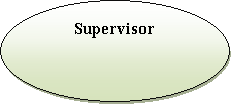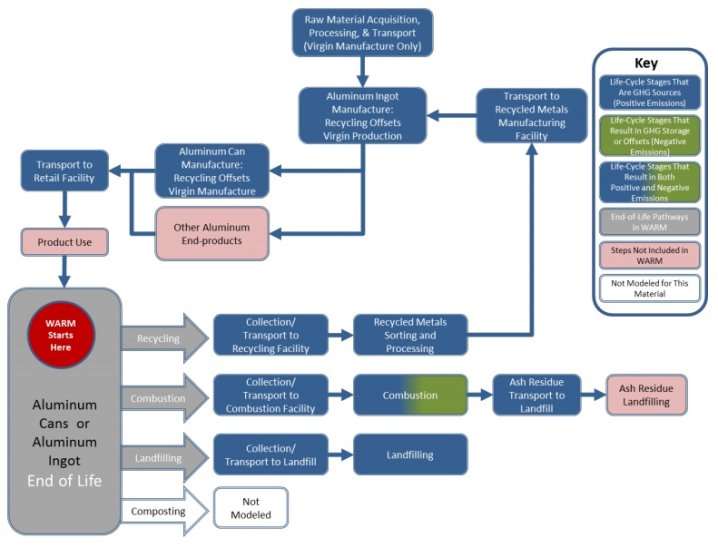Recycling Model for Waste Reduction
| ✅ Paper Type: Free Essay | ✅ Subject: Engineering |
| ✅ Wordcount: 1575 words | ✅ Published: 30 Aug 2017 |
Since the early schooling days, my teachers have noticed that I tend to always orient towards the chemical processes and the design-oriented aspects of control systems. And well, they were very right because later I recognize my passion of being a Materials Engineer. As it was a tough competition to get admitted in a reputed engineering university. Hence, soon after the completion of my secondary education from the Al-Falah Boys College, I studied hard and was able to ace the admission exam of the engineering university. My efforts pay off and I was able to get admitted in Dawood College of Engineering and Technology Karachi, Pakistan. From here, I studied Bachelor of Metallurgy and Material Engineering. I stayed here during the time period from 2009 till 2012. During my stay here, I have performed various practical and research-based projects in order to fulfill the requirement of my degree. In few of the non-technical subjects, I also have conducted various types of surveys. This project of “Methodology used in EPA’S Waste Reduction Model” was performed by me as my final year project at Dawood University. This project was completed within the assigned deadline of 11 months. I have performed this project along with another group mate under the guidance of my supervisor.
BACKGROUND
Being a materials engineer, it is mandatory to know about the processes and the tools utilized in various processes. This project is also the illustration of various metal objects that has to be recycled using the Waste Reduction Model that is being used in EPA’s. In this research, I have studied the complete methodology and studied the step by step process and stages. It is an important factor to recycle the metal objects so that they can be reutilized for various purposes. However, for some metals, the recycled version is not as pure as the original one and hence has the limited number of applications. In this study, I have studied three types of metals and their impacts.
Before starting the project and presenting my idea to the supervisor, I and my team member decided to conduct the beforehand research so that during the proposal defense we are very lucid with the concepts. Hence, we downloaded the related literature from the authentic websites such as Google scholar, ACM and IEEE digital libraries. We also have gone through the basic articles regarding the specifications and characteristics of specific metals. Though there were many questions in my mind unanswered which I later clarified from a supervisor. These all articles, research papers, and literature were cited properly while preparing the thesis for our project. Moreover, while performing on this project we make sure to follow an ethical and professional code of conduct.
When we were done with the initial home, we presented our project idea to our supervisor. He asked us few of the very basic questions to check our concepts. We were easily able to answer them all because of our initial research. The supervisor was glad about our preparation and with few additions, he approved our project. He further advised us to start with the preparation of the project milestone and the organizational plan. His advice was later proved to be very beneficial as because of this we were able to keep a check on the progress of our project. We also were assigned a co-supervisor who can guide us in the case of the unavailability of supervisor.
To ensure the progress and timely completion of the project, we have to submit the monthly progress reports. Along with these monthly project reports, we have to presently on a quarterly basis. And upon completion of the complete project, a detailed thesis was submitted citing all the references all along. These documents and the presentations were prepared using the Microsoft Word and PowerPoint. To ensure the safety, these files were submitted in the pdf format later. The complete project reporting mechanism is shown below in the chart.
Project Reporting Mechanism:








PERSONAL ENGINEERING ACTIVITY
While studying the impact and the results of reproduction and recycling, we have studied each and every phase involved in the complete cycle. I divided the project into different stages to ensure its completion within the allocated time. These stages involve the following:
- Studying the literature
- Process cycle development
- Collection of dumped metal
- Transportation Stage
- Recycling Stage
- Separation of end products and recycled products
- Transportation to the retailed facility
- Studying the recycling emission factor
- Results analysis
- Documentation phase
However, at different stages of the project, I was stuck. There my supervisors helped me a lot and guided me. At a stage, I also consulted a professor from another university to get better exposure.
In this project we have discussed the three metal forms including the aluminum cans, steel cans, and the copper wires. Aluminum cans are made of aluminum sheet bars. The supply of raw materials for the production of aluminum embrace limestone and salt, which must be extracted and elated; Crude oil, which must be extracted, refined and transported; which must be produced by respective first and transported materials. All the processes of mining emissions from the combustion of fossil fuels for the electricity and transport processes and non-energy production processes. These inputs are required to produce alumina (which is the main commercial mineral aluminum), aluminum castings, castings, plates and rolls for the manufacture of aluminum cans.
This module for the career episode is the illustration of the overall cyclic process which is shown in the figure1 below. The above figure shows the recycle cycle for the Aluminum ingot and cans in WARM. In order to recycle these cans, the aluminum objects are collected from wastes and are transported to the recycling plants. These metal pieces are transported to the metals manufacturing facility. Raw materials are added into this used metal. On undergoing the recycling process, the recycled metal is again transported to the retail facility upon separation of the end products and by-products. After the usage of the product, the cycle repeats. The combustion of this metal (Aluminum cans) emits ash residue which is transported to the landfill.
The cyclic process explained previously was for the residual of aluminum cans. This recycling process is almost same as in the case of the steel cans and the copper wires. The complete cyclic process is shown in figure 2 and 3 respectively. Steel boxes are defined as three parts welded HOT steel rolled in a blast furnace and basic oxygen oven or electric arc furnace (for recycling cans) boxes. The production of steel cans involves the extraction of iron ore and lime. These raw forms are utilized in order to develop cast iron, sheet metal and lastly the manufacture of steel boxes.

Figure 1: Life Cycle of Aluminum Can
Copper is comparable to other metals examined by the EPA, the vigor used in the ore, the commerce unit and the production and dealing out of the fuels used in production. The industrialized procedure begins with the extraction of the raw material. The ore melted and refined; the utilization of limestone electricity in this part of the results of the process is not very low energy CO2 emission process (USGS, 2004a). The refined copper melts in bars, which are led in the copper wire coils, which are annealed to facilitate the ductility and conductivity. The wire can be coated with either the good quality steel or with any good insulating material.

Figure 2: Life Cycle of Steel Cans

Figure 3: Life Cycle of Copper Wires
After defining the detailed processes we moved towards the analysis of results. The aim of the project was to define and find out the process energies at various stages for both the recycled objects and the original one. From observations, it was concluded that the process energy made for the original aluminum cans is approximately 184.74 per ton whereas this energy in case of the recycled aluminum can drop at the 36.24 per ton. However, the transportation energy for the original and recycled one is evaluated to be 0.91 and 0.44 respectively. Same parameters were observed for the steel cans and the copper wires as well. For steel cans, process energy and transportation energy for the virgin inputs are found to be 31.58 and 4.60 respectively. While in the case of the recycled steel cans these values drop as 11.78 and 4.03. For copper wires, transportation energy is 2.17 and the process energy is 101.05 for the recycled one, however, for the new metals these values were 0.46 and 122.52.
The optimum results were obtained as a result of this study and the project was completed in the allocated time efficiently. While, there are some limitations on the trial process. The factors that have been developed by aluminum bars of energy and greenhouse gas emissions here can be used from an aluminum bar, energy and the associated emission products processing aluminum bars produced for some (other than aluminum cans) as a substitute to produce an aluminum end product Probably quite significant. For example, the energy of aluminum cans associated with the processing of the aluminum ingots can generate about 25 percent of the total life cycle energy for the production of virgin aluminum cans.
SUMMARY
This project was a great learning experience for me. I have learned various perspectives of recycling process with the help of different research articles. I was able to make this project a success due to continuous support and help of my supervisor and the team-mate. Working in collaboration with my team member, I have learned the effective skills of working as a team.
Cite This Work
To export a reference to this article please select a referencing stye below:
Related Services
View allDMCA / Removal Request
If you are the original writer of this essay and no longer wish to have your work published on UKEssays.com then please click the following link to email our support team:
Request essay removal


